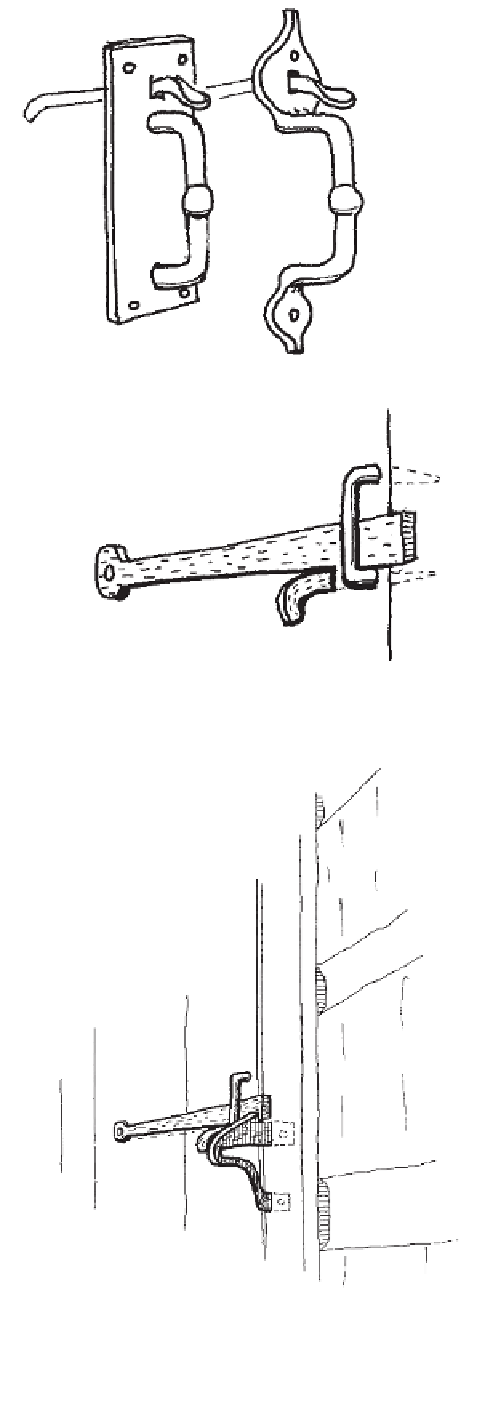Civil Engineering Reference
In-Depth Information
Hand-Forged Hardware
Today, you can find every kind of milled door, some
of which are massive and handsome. So, unfortu-
nately, are their prices. If you buy new milled doors,
do so beforehand so that you can plan specific doors
for a specific place. The temptation to save work and
time with low ceilings may become strong as you
labor, which means shorter doors. But building codes
forbid using many charming old doors that are too
short (under six feet eight inches). Few modern com-
mercial doors are constructed in a way that they can
be cut down without severe weakening.
Hardware
Again, I like wrought-iron strap hinges for house
doors, and these can also help brace the wood if they're
long enough. Where a blacksmith was near, the old
houses often had iron hinges, usually simple loop-
and-pin straps. More ornate scrollwork was rare,
unless the local smith specialized in such things.
I usually mount the hinges on the outside for
appearance, and always have the cross battens inside
out of the weather. This means offsetting the hinge so
the pintle is inside for the door to swing inward. It's a
simple bend when forging the strap. If the hinge is
mounted onto the cross batten, inside, it's all too
cluttered-looking. And the outside of the door is just
this flat expanse of vertical boards.
For really heavy doors, I tried using three hinges,
but it's really hard to line up the third one exactly. Now
I use two, and forge them from metal at least a inch
thick, sometimes as wide as five inches.
A wooden hinge is a work of fine craftsmanship.
Hickory or ash was usually used for toughness. It was
greased with lard or bear fat, and served long and well.
We reused a pair of these from a late-1700s log house
in the children's Virginia Discovery Museum cabin we
restored for a permanent exhibit in Charlottesville.
The wooden latch and string was almost universal
until iron became common. Today I use a metal ver-
sion of the old wooden latch, in either a Suffolk or a
Norfolk thumb-latch pattern.
You'll find many cabins with the patent cast-iron
door locks on the outside of the wood, sometimes with
white ceramic knobs. (These knobs were sometimes
used for nest eggs in the henhouse.) We have these


